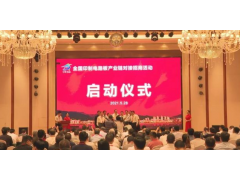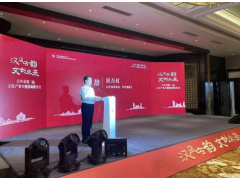News:For nearly a century, semiconductors have played an extremely important role in promoting modern science, technology and social progress by virtue of their performance advantages and industry-leading role. Surprisingly, the field of semiconductors, which is currently entering its third generation period, is developing even faster than ever before. To date, the semiconductor industry has been primarily driven by three generations of materials. The first generation, represented by silicon and germanium, began in the 1950s; the second generation, represented by gallium arsenide (GaAs) and indium phosphide (InP), appeared in the 1980s; the third generation, mainly Gallium nitride (GaN) and silicon carbide (SiC), dating back to the end of the 20th century. As the most capital-, manpower- and technology-intensive manufacturing industry, the semiconductor industry has always faced such a severe challenge: production has not started, and hydropower comes first. So far, almost all classical semiconductor growth techniques, such as molecular beam epitaxy (MBE), pulsed laser deposition (PLD), metal-organic chemical vapor deposition (MOCVD), and atomic layer deposition (ALD), etc., rely heavily on high-temperature processing. and harsh vacuum conditions (Fig. 1(a) and 1(b)), basically all are affected by high power stability. Taking a chip as an example, its manufacturing process is layered and interlocking. From the initial wafer production to the cutting on the production line to the final packaging, inspection and testing, the entire process usually covers dozens of complex processes. Any mistakes in these links will lead to scrapped wafers and subsequent huge losses. Therefore, for semiconductor manufacturing enterprises, their power supply often needs to ensure extremely high power quality and bear huge energy consumption costs. To a large extent, the semiconductor industry can be regarded as a "big household" of power consumption, so energy saving and consumption reduction are imminent.
Today, room-temperature printing of semiconductors based on liquid metals has started their journey. Unlike traditional methods such as chemical vapor deposition, which require high temperature, high vacuum, high energy consumption and complex processes, this liquid metal semiconductor printing technology is simple, stable, economical, efficient and energy-saving. It does not depend on the nature of the substrate and can be deposited on various surfaces as required, including those low-cost flexible materials such as plastics, paper and fabrics. This will greatly promote the widespread manufacture and use of flexible electronics. More importantly, liquid metal printing can achieve mass production and large-area printing, and the cost of personalized single-piece manufacturing is comparable to mass production, which has unique advantages and great potential. At present, the maximum wafer diameter for integrated circuit chip processing is 300 mm, while the diameter of printed semiconductors and devices can exceed 1 meter. Due to their reactivity, non-polarization, and templating properties, liquid metals can provide many effective solutions to effectively address the technical challenges of current semiconductors, significantly reducing cost and energy consumption. In traditional semiconductor manufacturing processes, the temperature inside the furnace can reach as high as 1000°C. For example, the power consumption of an industrial silicon furnace is 6300 kVA. Except that pickling does not consume electricity, the rest are high energy consumption. However, once the acid discharged from the silicon core and silicon rod during pickling is not properly treated, it is easy to cause pollution to the environment. On the contrary, liquid metal semiconductor printing technology is low-cost, energy-saving and environmentally friendly, and one device can complete almost all printing manufacturing processes. While a complete comparison of the power gains of the different approaches depends on each specific operating situation, the liquid metal printed semiconductor approach yields quite promising results, as its process has improved from conventional MOCVD (950°C–1050°C C) and ALD (above 250°C) process routes to turn around 25°C for room temperature fabrication (Fig. 1). In addition, the printing process based on additive manufacturing is completely green and environmentally friendly. On the one hand, this manufacturing saves raw materials and avoids potential pollution. On the other hand, the printing method itself does not rely on a high-temperature process, thus saving a lot of energy and reducing carbon emissions. All in all, the door of liquid metal printing to prepare semiconductor materials and high-performance functional devices has been opened. As more technological advances and fundamental discoveries continue to be made in this field, such semiconductor printing will have an increasingly important impact on future energy societies and environmental protection.
Fig. 1 Working principles and temperature conditions of three representative methods for manufacturing semiconductors. (a) MOCVD method to manufacture semiconductors at a temperature of 950°C~1050°C; (b) ALD method to manufacture semiconductors at a temperature higher than 250°C; (c) Gas or plasma-mediated liquid metal gallium chemical reaction for room temperature Manufacturing semiconductors, about 25°C.







